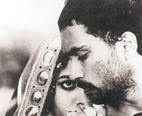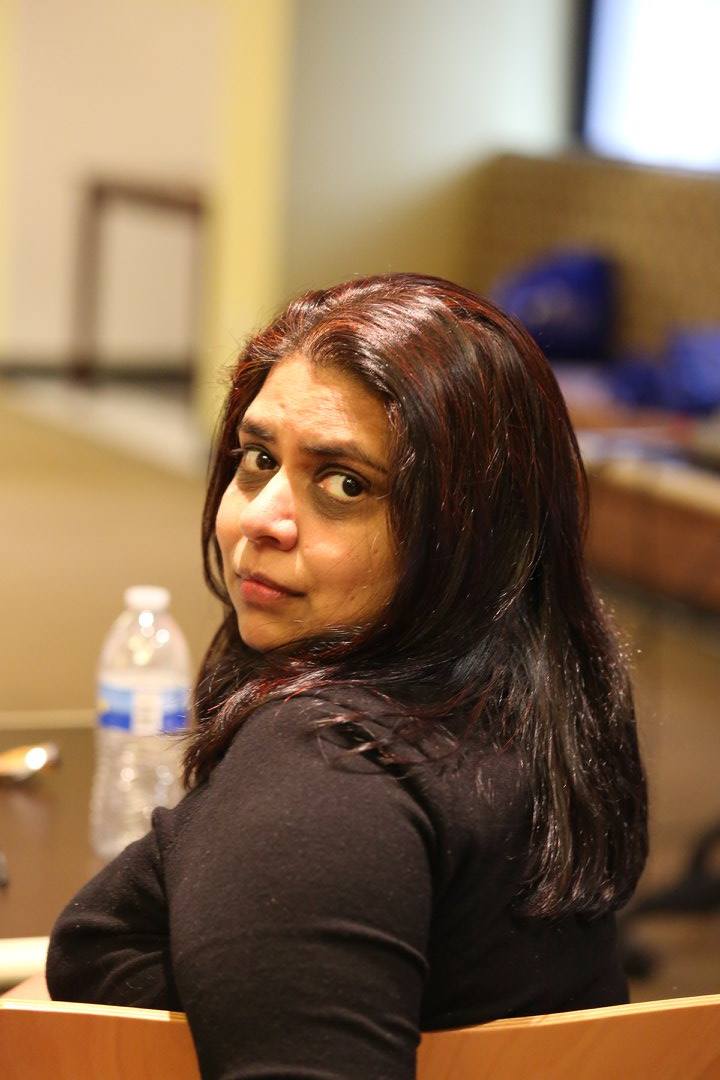
Cineflections-7
Maa Bhoomi (Our Land), Telugu 1979
-Manjula Jonnalagadda
“For each new class which puts itself in the place of one ruling before it, is compelled, merely in order to carry through its aim, to represent its interest as the common interest of all the members of society, that is, expressed in ideal form: it has to give its ideas the form of universality, and represent them as the only rational, universally valid ones.” – Reflections of a Young Man.
Maa Bhoomi was made by Bengali director Gautam Ghose. Telugu director B. Narasinga Rao wrote the screenplay and also produced it. This film was India’s official entry in the “Opera Primo” section at the Karlovy Vary International Film Festival, the Cork Film Festival, the Cairo Film Festival, and the Sydney Film Festivals in 1980. The film also won the Andhra Pradesh state award for the best feature film.
This is the debut narrative film of the director Gautam Ghose. He made a few documentary films before this film. He is known for realistic and impactful films. His films have played at various film festivals around the world. He still actively making films. Paar, Padma Nadir Majhi, Abar Aranye are among his well known films. Ghose also was awarded Vittorio DeSica award. I don’t know why a Bengali was chosen to direct a Telugu film.
Narasinga Rao who wrote this film is one of the very few Telugu film makers who did not make any commercial films. KNT Sastry is the only other film maker as far as I know who is in that category. B. Narasinga Rao’s films reflected the culture, the stories and struggles of common people of Telangana Region. His films have played at various festivals including Cannes. His films are extreme hard to find. Whatever films I have seen of his were during Doordarshan (Indian National TV) days.
The film is based on a story called “Jab Khet Jage” (When agricultural fields woke up) by Kishen Chander who wrote several short stories and novels in Hindi and Urdu. He also wrote scripts for some Hindi films well known among those is Mamta and Dharti ke Lal.
The film takes place during the time, after India became independent during the days that lead to Annexation of the princely state of Hyderabad. Nizam the ruler of Hyderabad wanted it to be independent. The population of Hyderabad state which was largely Hindu wanted to part of India. Nizam used militia known as Razakars to quell the opposition. People of Telangana took up arms to defend themselves from Razakars and powerful landowners. The government of India moved in to the state in September 1948 and made Hyderabad state a part of India.
The film is about Ramayya played by Sai Chand, a boy who grows up as a bonded laborer in a village called Siripuram, in Nalgonda district of Telangana. The feudal lord of the town grabs the land of the people and rules the village like a tyrant with the help of Nizam’s officials. He forces people to pay taxes, when they cannot afford them, abducts women and force them to have sex with him. When Ramayya’s girlfriend is forced to have sex with the landlord, he gets upset and leaves the village. After some odd jobs he ends up in Hyderabad, attracted to communist ideologies and comes back to become part of Telangana Armed Rebellion.
There is a lot of history in the film. It shows the atrocities of feudal lords, and how they corrupt the officials to have their way. It shows how communist ideologies influenced the Telangana rebellion. Also how Razakars massacred common people. The Telangana rebellion was led by the Communist Party of India. Let me warn you, the film is pro-communist. But the history was quite accurately depicted.
Goutam Ghose’s direction was very realistic. It was pretty amazing keeping in mind that Goutam Ghose was not a Telugu. The actors were mostly non-professional. Ghose is highly influenced by Italian Neo-realism. When I rewatched the film I wondered if it could be influenced by Luchino Visconti’s “La Terra Trema”. Ghose also had partial credit for music.
Screenplay by B. Narasinga Rao is very good. While the film feels like a documentary, if you are interested in history, it keeps you engaged. Cinematography by Kamal Nayak is very good.
Music of the film was primarily composed by the legendary Telugu folk singer, Vinjamuri Seetha. She was the niece of Telugu poet Devulapalli Krishna Sastry. The background score was very good. Gautam Ghose was also credited for music. I could kind of figure out what parts might have been composed by Vinjamuri Seetha. Two songs in the film are fabulous. One penned by Suddala Hanumanthu who was part of Telangana rebellion. It is titled “Palletoori pillagada” (Village lad) sung beautifully by Sandhya. Another one “Bandenaka bandi katti” sung by the revolutionary poet and singer Gaddar.
Performances in the film are fantastic. Most actors in the film are non-professional, and did fantastic job. This is the debut film of Telugu actor Sai Chand, who went on to act in a few films in this genre.
Watch the film to learn the history. Also to see two geniuses at work, Goutam Ghose and B. Narasinga Rao.
*****

Manjula Jonnalagadda is from Hamsavaram, East Godavari Dist, and lives in Los Altos, CA. She is a Techie by profession and complex by nature. She loves to read; Chekhov, Kafka, KoKu and Sankaramanchi are among her long list of favorites. She is serious about films, and a regular at a few local Film festivals. Her other interests are quizzing and hiking. While she enjoys western classical music and all kind of vegetarian food sans beans and fake meat, she seeks comfort in Carnatic music and curd rice.
